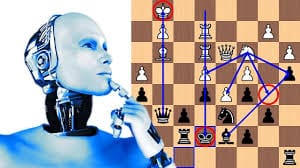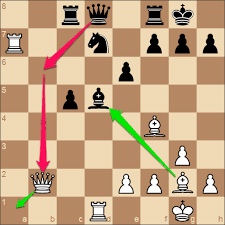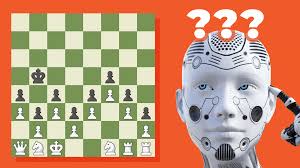Chess Engine
Chess engines have transformed the ancient game of chess, blending artificial intelligence, computational power, and strategic depth to create tools that challenge human players and redefine how the game is studied and played. These sophisticated programs, capable of analyzing millions of positions per second, have become indispensable for players, coaches, and enthusiasts. From their humble beginnings to their current dominance, chess engines like Stockfish, Komodo, and Leela Chess Zero have reshaped the chess landscape. This article explores their origins, mechanics, impact, and cultural significance, highlighting why they remain a cornerstone of modern chess.
Origins and Evolution
The history of chess engines dates back to the 1950s, when computer scientists began experimenting with artificial intelligence to simulate chess play. Early programs, like Alan Turing’s Turochamp (1948), were theoretical, limited by the era’s rudimentary hardware. The 1980s saw significant progress with dedicated chess computers like Chess Challenger, which used basic algorithms to evaluate positions. However, it was IBM’s Deep Blue that captured global attention in 1997, defeating world champion Garry Kasparov in a historic match, marking a turning point for chess engines.
Modern chess engines leverage advanced algorithms, machine learning, and vast opening databases to achieve superhuman performance. Stockfish, an open-source engine launched in 2008, uses alpha-beta pruning and heuristic evaluation to analyze positions with remarkable precision. Komodo Dragon, known for its positional understanding, balances tactical calculation with strategic insight. Leela Chess Zero, introduced in 2017, employs neural networks inspired by DeepMind’s AlphaZero, learning through self-play rather than traditional programming. These advancements have pushed chess engines beyond human capabilities, achieving Elo ratings above 3500, far surpassing the best human players.
How Chess Engines Work
At their core, chess engines are software programs that evaluate positions and select optimal moves. They rely on three key components: search algorithms, evaluation functions, and databases. The search algorithm, such as minimax or alpha-beta pruning, explores possible moves and their outcomes, often analyzing millions of positions per second. The evaluation function assigns numerical values to positions based on factors like material balance, king safety, pawn structure, and piece activity. Opening databases and endgame tablebases provide precomputed strategies for common positions, enhancing efficiency.

For example, Stockfish uses a static evaluation function to assess positions, considering factors like bishop pair advantages or passed pawns. It then explores move trees, pruning less promising branches to focus on high-value paths. Leela Chess Zero, by contrast, uses a neural network trained through millions of self-play games, mimicking human intuition while surpassing it in depth. Players interact with these engines via graphical user interfaces like ChessBase or Lichess, analyzing games, practicing against the engine, or reviewing positions.
Impact on Chess
Chess engines have revolutionized how players train, analyze, and compete. Amateurs use engines to review games, identifying blunders or missed tactical opportunities. Professionals, including grandmasters like Magnus Carlsen, rely on engines to prepare for opponents, studying opening novelties and refining strategies. Engines have also democratized chess education—free platforms like Lichess and Chess.com integrate Stockfish, making top-tier analysis accessible to all.
In competitive play, chess engines have raised the bar for precision. The availability of real-time analysis has led to stronger online play, though it also sparked concerns about cheating. High-profile cases, like the 2022 Carlsen-Niemann controversy, highlighted the challenge of detecting engine use in online tournaments. To counter this, platforms employ anti-cheating algorithms that monitor move patterns for engine-like accuracy.
Engines have also influenced chess theory. They’ve debunked outdated opening lines, revived obscure moves, and deepened understanding of endgame positions. For instance, Leela Chess Zero introduced bold sacrificial strategies, challenging conventional wisdom. However, some critics argue that engines homogenize play, as players mimic their optimal moves, reducing creativity. Others counter that engines inspire innovation by revealing new possibilities in middlegame and endgame scenarios.
Appeal and Accessibility
The appeal of chess engines lies in their versatility. Beginners use them to learn basic tactics, while advanced players analyze complex positions. Engines offer customizable difficulty levels, allowing users to simulate opponents from novice to grandmaster strength. Their integration into online platforms like Chess.com ensures accessibility across devices, from smartphones to PCs.
Chess engines also provide a unique challenge. Playing against Stockfish feels like facing an omniscient opponent, pushing players to elevate their game. The ability to pause, rewind, or explore alternative moves during analysis fosters a deeper understanding of chess principles. Additionally, open-source engines like Stockfish encourage community contributions, with developers refining algorithms and sharing updates freely.
Educational and Cognitive Benefits
Chess engines are powerful educational tools. They teach critical thinking by allowing players to test ideas and receive immediate feedback. For example, analyzing a game with Stockfish reveals why a move was suboptimal, reinforcing strategic concepts like central control or piece coordination. In schools, engines support chess curricula, helping students develop problem-solving skills and pattern recognition.
Cognitively, engaging with chess engines enhances memory, concentration, and decision-making. The iterative process of testing moves against an engine mirrors scientific inquiry, encouraging players to hypothesize and adapt. For children, engines make learning fun, while adults use them to maintain mental sharpness. Therapeutic settings also employ chess engines to support cognitive development in individuals with learning challenges.
Cultural Significance and Community
Chess engines have left a profound mark on chess culture. Online communities on platforms like Reddit and X discuss engine updates, share analysis boards, and debate their impact. Events like the Top Chess Engine Championship (TCEC) pit engines like Stockfish and Leela against each other, attracting thousands of viewers who marvel at their superhuman play. These tournaments showcase the cutting edge of AI development, drawing parallels to broader advancements in machine learning.
The open-source nature of engines like Stockfish fosters a global community of contributors, from programmers to chess enthusiasts. Posts on X highlight ongoing experiments, such as training neural networks on new hardware or integrating engines into mobile apps. Meanwhile, chess streamers use engines to analyze games live, engaging audiences with real-time insights.
Challenges and Future Directions
Despite their benefits, chess engines face challenges. Overreliance can stifle creativity, as players may prioritize engine-approved moves over intuitive play. Cheating remains a persistent issue, requiring robust detection systems. Additionally, the computational demands of neural network-based engines like Leela limit their use on low-end devices.
Looking ahead, chess engines are poised to evolve further. Advances in quantum computing could accelerate analysis, while AI integration may lead to engines that adapt to individual player styles. Hybrid formats, blending human and engine play, are also emerging, as seen in centaur chess events where humans and AI collaborate.

Conclusion
Chess engines have redefined the game of kings, merging artificial intelligence with strategic brilliance to create tools that educate, challenge, and inspire. From Deep Blue’s historic victory to Stockfish’s open-source dominance, these programs have made chess more accessible and dynamic. As they continue to evolve, chess engines will shape the future of the game, ensuring that the pursuit of checkmate remains as thrilling as ever.
